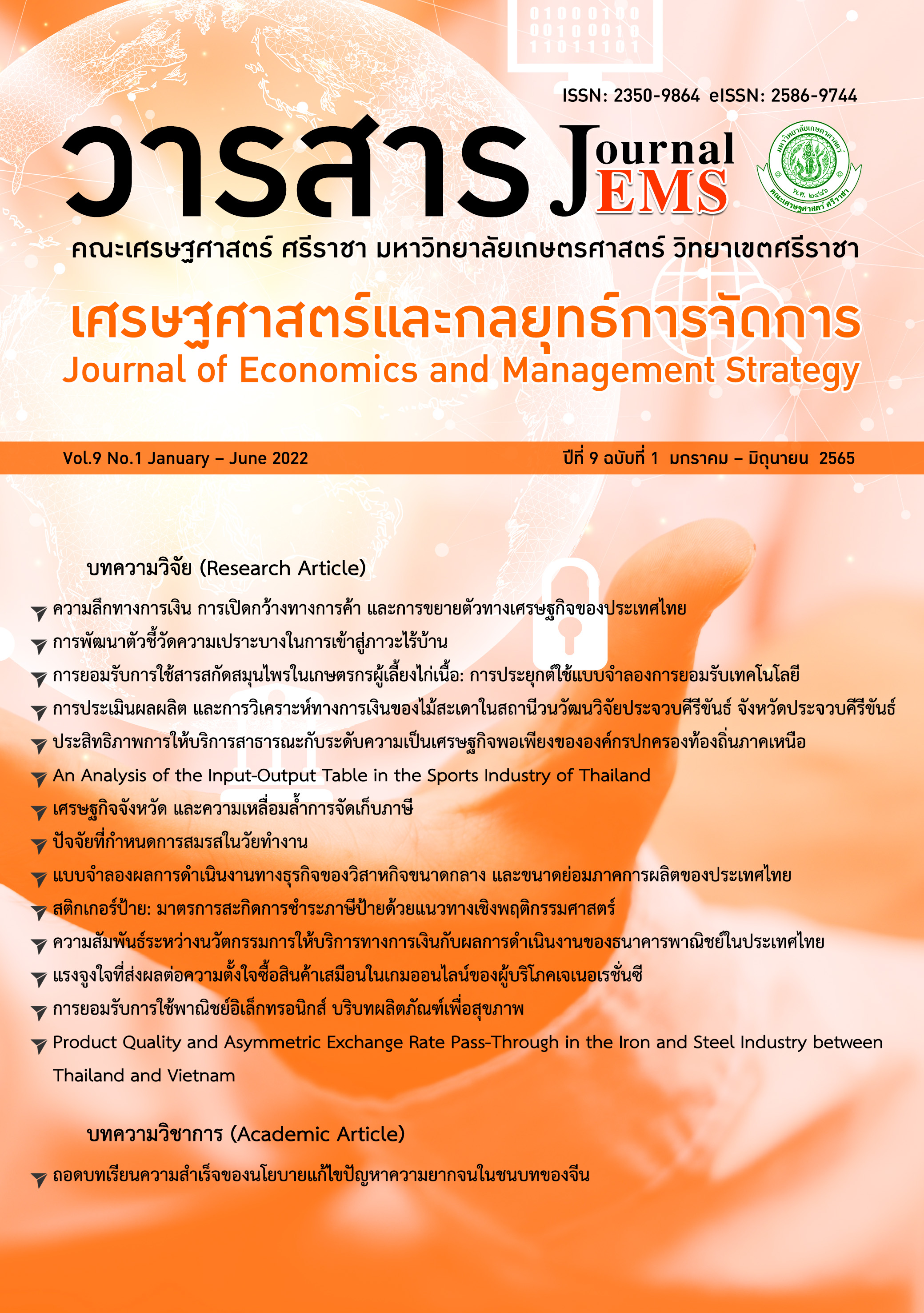Provincial Economies and Inequality in Tax Collection เศรษฐกิจจังหวัดและความเหลื่อมล้ำการจัดเก็บภาษี
Main Article Content
บทคัดย่อ
บทความนี้มีวัตถุประสงค์ในการศึกษา 2 หัวข้อ หนึ่ง จำแนกผลการจัดเก็บภาษีโดยกรมสรรพากร ซึ่งพัฒนาจากฐานข้อมูล 77 จังหวัดระยะเวลา 20 ปี (2541 -2560) เป็นรายจังหวัดและประเภท และทดสอบความสัมพันธ์ระหว่างภาษีกับตัวชี้วัดทางเศรษฐกิจของจังหวัดและปัจจัยเชิงสถาบันอื่นที่เกี่ยวข้อง วัดการตอบสนองของภาษีต่อ GPP การวิเคราะห์เปรียบเทียบผลจัดเก็บระหว่างจังหวัดและภูมิภาค สอง ศึกษาการกระจุกตัวของภาษีต่อหัวและวัดความเหลื่อมล้ำ ผลการศึกษายืนยันว่า (ก) อัตราการเจริญเติบโตของรายได้ภาษีเฉลี่ยร้อยละ 7.6 ต่อปี ซึ่งสูงกว่าอัตราการขยายตัวของ GPP ร้อยละ 6.5 ต่อปี วัดค่าความยืดหยุ่นของภาษีของกรมสรรพากรต่อ GPP เท่ากับ 1.16 (ข) ผลการศึกษาความเหลื่อมล้ำ ยืนยันด้วยดัชนีจินีเท่ากับ 0.7 ซึ่งตีความว่าสูงมาก สาเหตุเนื่องจากการกระจุกตัวของสถานประกอบการในภูมิภาคคือกรุงเทพและปริมณฑล และ ภาคตะวันออก และวิธีปฏิบัติของกรมสรรพากรซึ่งอนุญาตให้หน่วยธุรกิจที่มีสาขาในต่างจังหวัดสามารถเลือกชำระภาษีแบบรวมจ่ายหรือแยกจ่ายได้ จึงเกิดภาพลวงตาว่าแหล่งที่มาของภาษีในกรุงเทพมหานครสูงมากถึง ร้อยละ 60 ของรายได้ภาษีรวม (ปี 2560) ซึ่งเกินความเป็นจริง หากใช้ GPP เป็นเกณฑ์ประเมินภาษีที่เกิดขึ้น ในกรุงเทพมหานครจะมีสัดส่วนเพียงร้อยละ 33 เท่านั้น
ABSTRACT
This article focuses on two areas of study. First, the tax collected by Thailand’s Revenue Department, from a developed database of 77 provinces over a period of 20 years (1998-2017), was classified by province and categories, then tested for a relationship with economic indicators and other institutional factors of the province. Further, response to GPP was measured, and the analysis among provinces and regional collections was compared. Secondly, the concentration of tax per capita and inequality was measured. The results showed the following: 1) the average tax income growth rate was 7.6% per year, higher than the GPP growth rate of 6.5% per year, and the tax elasticity with respect to GPP was 1.16; 2) the results of the inequality study were confirmed with a Gini index of 0.7, which is considered very high. The reasons are due to the concentration of establishments in Bangkok and vicinity and in the eastern region, and the Revenue Department's procedures, which allow businesses with branches in other provinces to choose to pay tax in total for the whole company or to have their branches pay separately. It is therefore an illusion that the tax from Bangkok is as high as 60% of the total tax revenue (for 2017), which is exaggerated. If the GPP were used as tax assessment criteria, the amount of Bangkok tax should account for only 33%.
